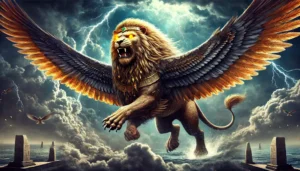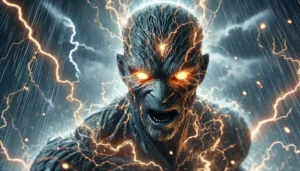Intro to Egyptian Mythology
Egyptian mythology is like one of the oldest fandoms ever, packed with epic stories, gods, and creatures that define ancient Egypt. These myths aren’t just random tales; they were part of Egypt’s entire way of life, giving people hope, explaining nature, and even justifying why pharaohs were seen as a kind of god on earth.
The gods in Egyptian mythology weren’t all-powerful, all-knowing beings but had their own roles, relationships, and quirks. Ra, the sun god, was a huge deal. Every day, Ra would travel across the sky, symbolizing life and creation, only to go “down under” at night, where he’d battle chaos and then rise again in the morning. As one ancient Egyptian saying goes,
“In the beginning, there was only the ocean of chaos, from which emerged the sun, and with it, life and creation.”
These stories weren’t just religious—they shaped daily life, art, and even architecture. Pyramids, for example, weren’t just giant tombs; they symbolized eternal life and even connected the pharaoh to the heavens through their alignment with the North Star. Everything about Egyptian mythology is based on dualities—life and death, chaos and order—and it was all interconnected.
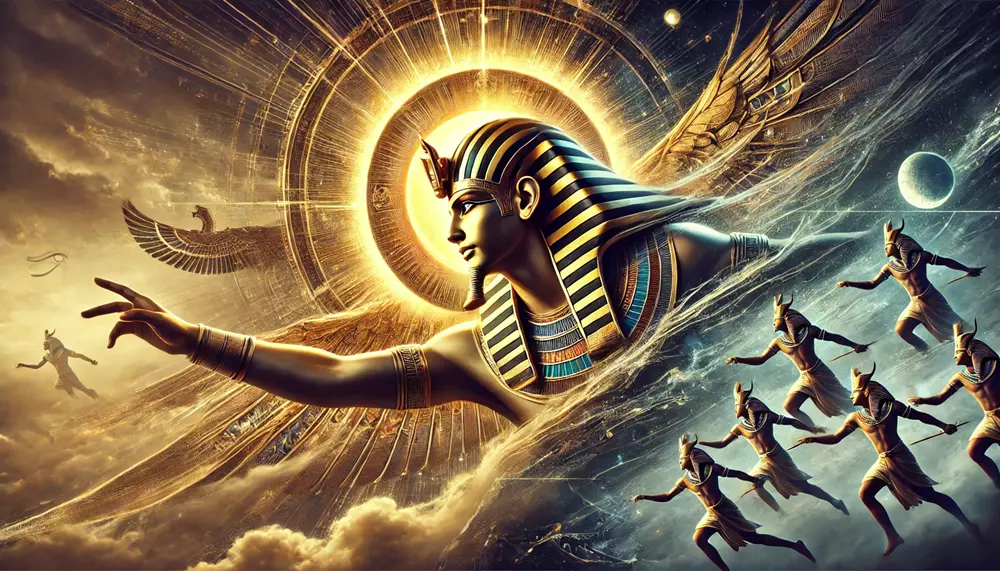
Creation Myths and the Universe’s Origin Story
Like any good origin story, Egyptian mythology has multiple creation myths that attempt to explain where everything came from. One of the most popular tells how the god Atum emerged from a vast ocean of chaos called Nu. Atum created the gods Shu (air) and Tefnut (moisture), who then had two more kids, Geb (earth) and Nut (sky). Together, they made up the Ennead—a family of nine gods responsible for creation and keeping cosmic balance.
Another version of creation involves Ptah, the god who simply spoke things into existence. His story is all about the power of words and creativity. In Egyptian culture, words and symbols had their own kind of magic. This concept shows up in an ancient hymn, which goes:
“When Ptah speaks, the world takes form.”
In addition to these larger-than-life stories, daily natural events were woven into Egyptian beliefs. The sun god Ra, for instance, didn’t just shine all day. Every night, he had to journey through the underworld, battling Apep, a massive serpent symbolizing chaos. This nighttime journey is like an Egyptian version of an epic boss battle, with Ra winning every night and rising again in the morning. To Egyptians, this wasn’t just a story—it was reassurance that order would always come out on top.
One of the most famous myths is the story of Osiris and Isis, which explains the cycle of life, death, and rebirth. Osiris, the god of the dead, was betrayed and chopped into pieces by his jealous brother, Set. His devoted wife, Isis, went on a quest to find and reassemble him, ultimately bringing him back to life, which allowed him to rule the underworld. This myth embodied values like loyalty, family bonds, and the possibility of eternal life.
Meet the Ennead and the Egyptian Pantheon
The Ennead, also called Egypt’s “Big Nine,” is the core squad of Egyptian mythology. These nine gods—Atum, Shu, Tefnut, Geb, Nut, Osiris, Isis, Set, and Nephthys—each have unique roles that touch every part of life, death, and beyond. They show up in different forms and myths, all focused on keeping balance and cosmic order.

Ra is often included in this core group, especially since he was the most important god, symbolizing the sun and all of life. In some stories, he even combines with other gods, like becoming Amun-Ra, which just shows how central he was to Egyptian beliefs. His daily journey across the sky was like the original life cycle, representing birth in the morning, life through the day, and death when he dipped below the horizon.
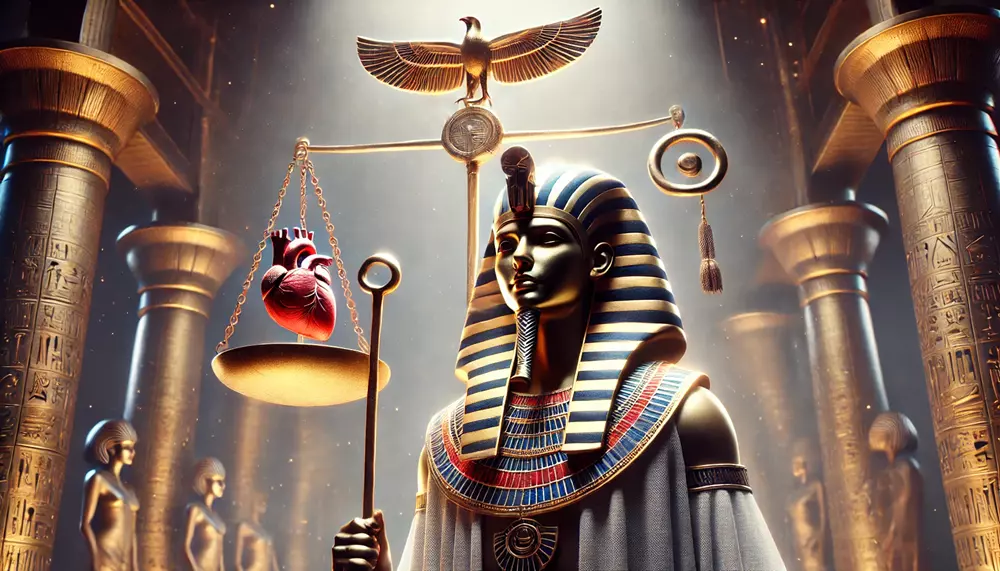
Osiris was the god of the afterlife and the underworld, and he also ran the Hall of Ma’at, where souls were judged after death. The ancient Egyptians believed that a person’s heart was weighed against Ma’at’s feather of truth. If the heart was light, the soul got eternal peace. As the Book of the Dead describes:
“He who has not a heart weighed down by sin shall walk with Osiris and the blessed in the fields of eternity.”
Then there’s Isis, one of the most popular goddesses, not just in Egypt but all over the ancient world. She’s the goddess of magic, motherhood, and protection, and her influence was so strong that her image is thought to have inspired early depictions of the Virgin Mary. Isis’s devotion to Osiris and her magical skills make her a symbol of loyalty, love, and power.
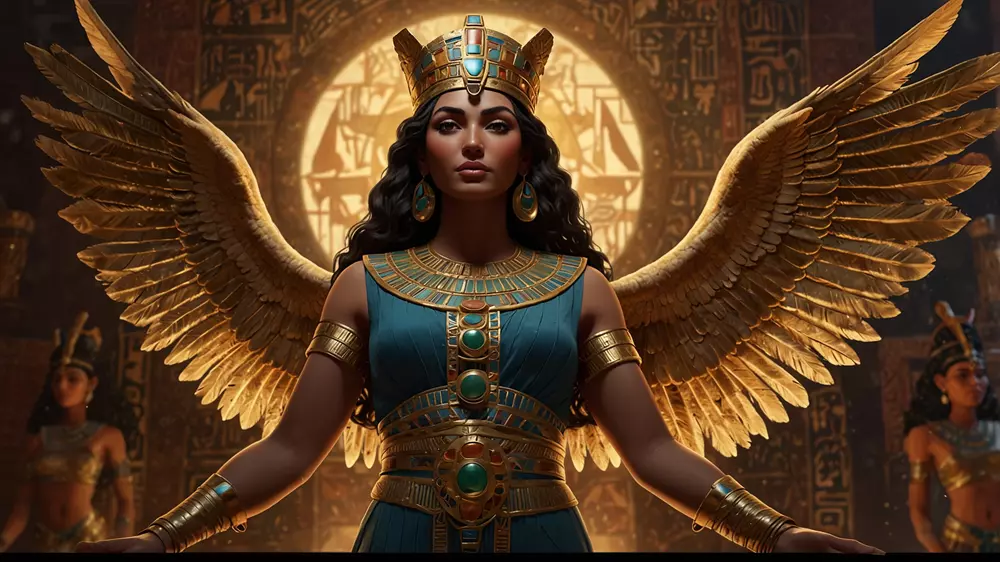
Set, the god of chaos and desert storms, represents everything wild and unpredictable. Often depicted as Osiris’s enemy, he’s a villain in many myths, but Egyptians also saw him as necessary for balance. He embodies the inevitable challenges in life, showing that a bit of chaos is essential to the balance of the world.
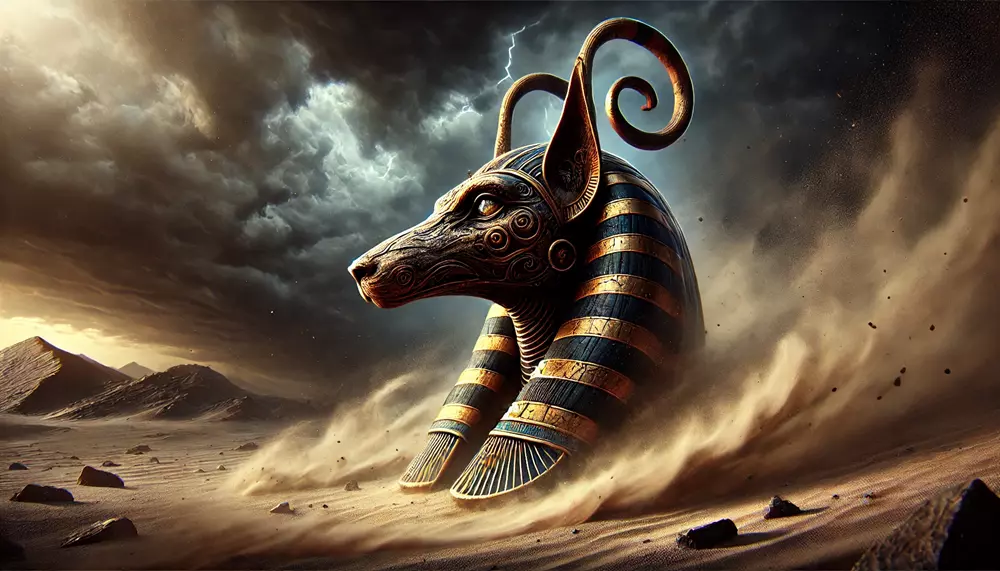
With all these gods and their unique powers and roles, Egyptian mythology created a complex and relatable pantheon. These gods mirrored the values and ideals of Egyptian society, making mythology a blend of cosmic stories and life lessons.
Heroes, Demigods, and Sacred Kings
Egyptian mythology didn’t just focus on gods—there were also legendary humans, powerful demigods, and rulers who earned mythical status. These figures, revered for their wisdom, bravery, or divine connections, are a huge part of Egypt’s storytelling. Some even crossed the line from mortal to god, thanks to their influence and legacy.
Imhotep is probably Egypt’s most legendary mortal. He was a high priest, a healer, and the architect of Egypt’s first pyramid, the Step Pyramid of Djoser. Imhotep’s brilliance elevated him from respected advisor to demigod, and eventually, people began worshiping him. His fame spread so wide that even the Greeks admired him, linking him to Asclepius, their god of medicine. Talk about transcending cultures!
Another icon was Amenhotep, Son of Hapu. Like Imhotep, he was an architect, scribe, and advisor who got “god status” posthumously for his foresight and knowledge. Amenhotep became a symbol of wisdom and divine insight, and many sought his blessings long after he passed, almost like a real-life superhero who people trusted for spiritual help.
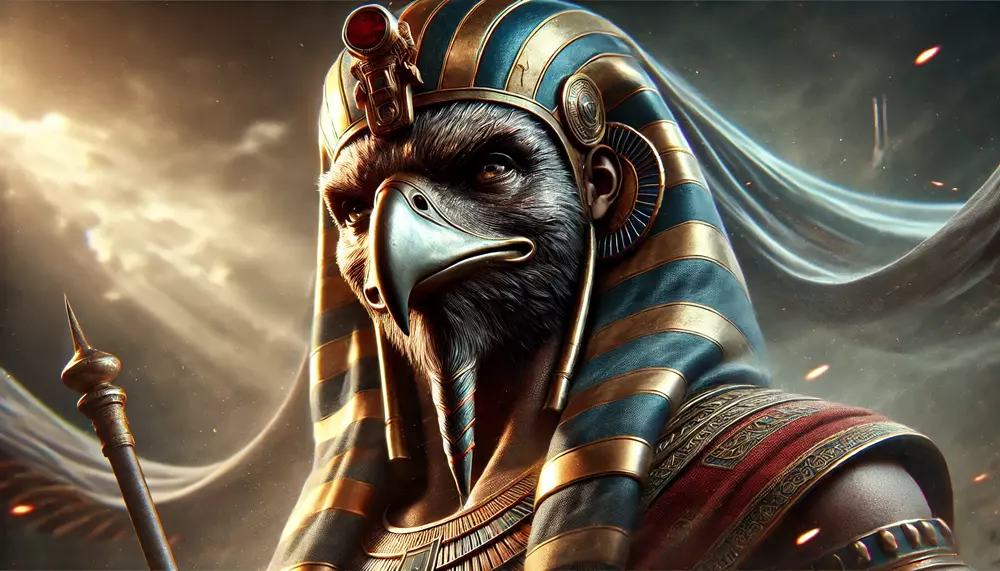
Then there’s Horus, the falcon-headed god often shown as the son of Osiris and Isis. Horus is known for his epic clash with Set, the god of chaos, who murdered Osiris. This rivalry is central to Egyptian mythology, symbolizing the battle between order and chaos. As the son avenging his father, Horus represented justice and loyalty, qualities Egyptians held dear. Pharaohs were believed to be earthly embodiments of Horus, making him a bridge between the mortal and divine worlds.
Pharaohs themselves, like Ramesses II and Thutmose III, were seen as sacred kings—divine representatives of Horus or Ra. They weren’t just rulers; they were believed to channel the gods, making them living symbols of divine power. Ramesses II even built statues as tall as 60 feet, like the ones at Abu Simbel, to reinforce his god-like status and his “heroic” feats in battles and diplomacy.
Beasts and Mythical Creatures
Ancient Egypt was not only home to gods and humans but also to a whole roster of mystical beasts and hybrid creatures. These mythical beings ranged from protectors and guides to fearsome judges, and each had a distinct role in the mythological landscape.
One of the most iconic creatures is The Sphinx. With the body of a lion and the head of a human, the Sphinx guarded sacred places and was a symbol of wisdom and power. The Great Sphinx of Giza is the most famous example, standing as both a protector and a riddle keeper, embodying the mysteries of the gods.
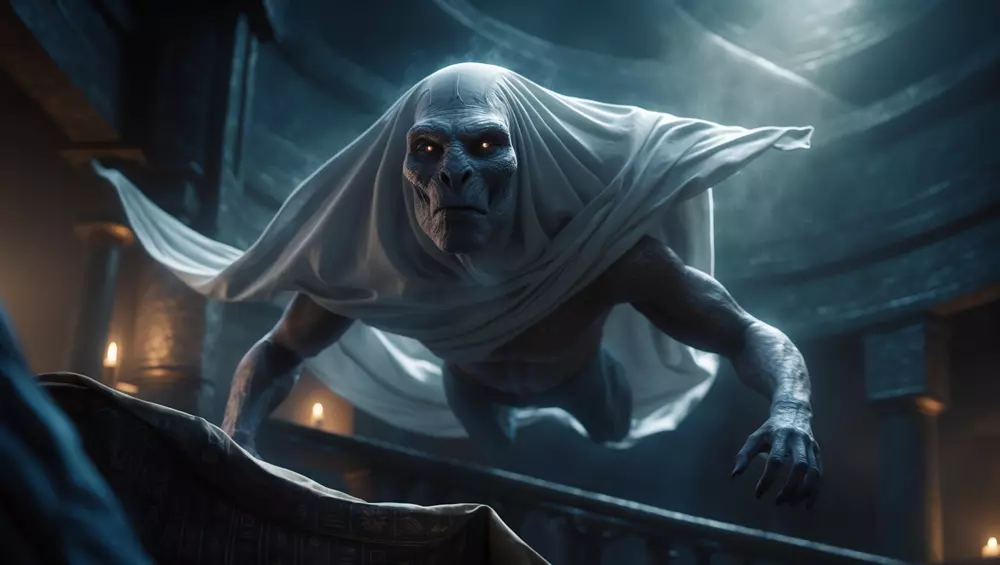
Medjed is one of the more mysterious creatures. Often depicted as a floating, ghostly figure shrouded in a sheet, Medjed is known as “The Smiter,” a being capable of striking down enemies while remaining invisible. He’s an eerie, almost “underdog” figure in Egyptian mythology, hinting at powers that are just out of sight and reach.

Ammit was the “devourer” and final judge of souls, made from parts of Egypt’s deadliest animals: lion, crocodile, and hippo. She was terrifying because if a soul’s heart was too heavy with sin, Ammit would devour it, ending any chance for eternal life. Egyptians feared Ammit as the ultimate enforcer of morality. An inscription sums it up well:
“To lose one’s heart to Ammit was to lose eternity.”
Egyptian mythology also introduces Bennu, a bird associated with Ra and Osiris, who represented cycles of life, death, and rebirth. Bennu was a major influence on the later myth of the Greek phoenix. Egyptians saw Bennu as a powerful symbol of immortality, linking it to the endless cycle of the sun’s rise and fall.
The Serpopard, with the body of a lion and the neck of a snake, is one of the stranger creatures in Egyptian lore. It represents wild, untamed power and chaos, sometimes shown as a symbol of foreign lands beyond Egypt’s control. Griffins, with the bodies of lions and heads of eagles, also made their way into Egyptian art, symbolizing protection and royal power. Griffins, though more commonly found in Mesopotamian and Greek myths, fit well into Egypt’s mythology as protectors.

Uraeus, the rearing cobra often seen on pharaohs’ headdresses, represents the goddess Wadjet and was believed to protect the king. This snake symbol not only reinforced a pharaoh’s divine authority but was also thought to strike down anyone who threatened the throne.
The Apep or Apophis serpent was another beast, symbolizing chaos and darkness. Each night, as Ra journeyed through the underworld, he had to battle Apep, ensuring that light would return to the world every morning. The serpent’s defeat was a sign of victory for order over chaos.
Lastly, the Crocodile God Sobek represented both life and destruction. Sobek was worshiped for his connection to the Nile, which was essential for survival in Egypt. Real crocodiles were kept in temples and adorned with jewelry as living embodiments of Sobek, bridging the gap between beast and god.
Concept of the Afterlife
The Egyptians had a very detailed view of the afterlife, seeing death as merely a step into another realm. To them, life and death were inseparable; death was simply the doorway to another stage of existence.
When an Egyptian died, their soul embarked on a journey to the Hall of Ma’at. Here, Anubis, the jackal-headed god, would weigh their heart against the feather of Ma’at, the goddess of truth. A light heart meant purity, leading to paradise. However, if the heart was heavy with sin, Ammit, the devourer, would consume it, erasing any chance of eternal peace.
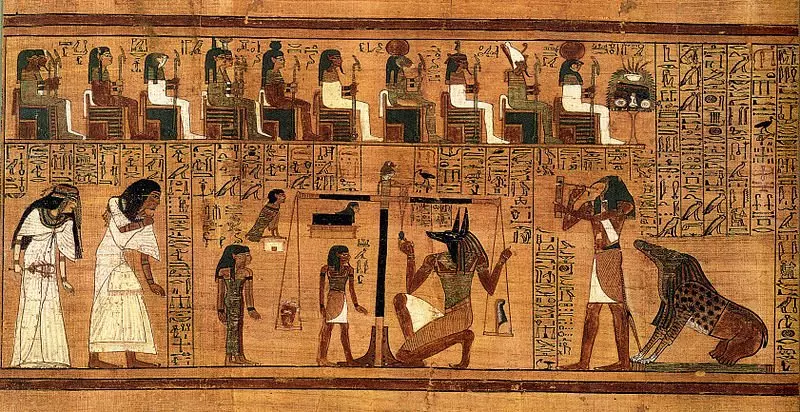
Egyptians didn’t just believe in a simple soul; they had multiple “soul components,” like the Ka (life force), Ba (personality), and Akh (immortal spirit). Keeping the body intact was essential, which is why mummification was so central—so the Ka could come back to it.
Every night, Ra would descend into the underworld and unite with Osiris, the god of the dead, symbolizing death and rebirth. Egyptians believed that this cycle reassured them of life’s continuation, offering hope that they, too, would experience rebirth.
The afterlife itself, the Field of Reeds, was an ideal version of Egypt, where souls could live forever in peace, surrounded by lush landscapes and plenty of resources. Egyptians saw it as a perfected homeland where everyone had a plot of land to cultivate, a bit like paradise with a “homey” vibe.
Tombs, like the pyramids, were carefully constructed as gateways to this paradise, with hieroglyphs showing scenes of the soul’s journey through the underworld. Thoth, the god of wisdom, kept records of each soul’s journey, while Isis and Nephthys served as guides, comforting and protecting the souls as they navigated the challenges of the afterlife.
In short, the afterlife wasn’t just a belief—it was an entire system that shaped Egyptian life. Egyptians built their society around the hope of eternal life, with gods, creatures, and rituals guiding them from the mortal world to an eternal one.
Symbols and Iconography in Egyptian Mythology
Ancient Egypt’s visual symbols weren’t just decorative—they told stories, connected people to their gods, and packed a huge amount of meaning into simple images. Some of these symbols have stayed relevant, showing up everywhere from tattoos to pop culture, because they have this timeless, almost magnetic quality.

Take the ankh, often called the “key of life.” The ankh represents eternal life and is one of the most iconic Egyptian symbols. You’ve probably seen it in movies, video games, and even on people’s jewelry. Pop star Rihanna has an ankh tattoo, and it shows up in video games like Assassin’s Creed Origins, where the ankh is used as a symbol of power. The symbol’s blend of mystery and life continues to resonate.
Then there’s the Eye of Horus, which Egyptians believed could offer protection. This symbol is all over the place in modern culture as well, representing things like inner wisdom and foresight. The Eye of Horus shows up in jewelry, graphic designs, and even on music album covers. Beyoncé wore an Eye of Horus pendant during her On the Run tour, drawing a connection between ancient protection and modern empowerment.

Another famous symbol is the scarab beetle, representing transformation and rebirth. Scarabs were engraved on amulets, seals, and jewelry in ancient Egypt, and even today, the beetle shows up as a symbol of strength. In the film The Mummy, scarabs are portrayed as supernatural creatures, enhancing the story’s mystery and horror.
The Djed pillar, symbolizing stability, and the Was scepter, a symbol of power and control, were often depicted in ancient artwork, used by gods and pharaohs alike. While they’re less common in pop culture, the Was scepter appears in video games like Tomb Raider and God of War, where players use it to unlock secrets or navigate the underworld. It’s a subtle nod to the mystical influence of Egyptian mythology in modern storytelling.
Egyptian Mythology in Modern Culture
Ancient Egypt and its mythology continue to fascinate the modern world, influencing everything from movies and TV shows to fashion and art. For a culture as old as Egypt, it’s remarkable how well its myths have survived and adapted to modern times, taking on fresh meanings while keeping their ancient essence.
The Mummy Franchise – Perhaps the most iconic movie series drawing directly from Egyptian mythology, The Mummy has had multiple adaptations, each adding its own spin to the original myths. The franchise explores the ideas of resurrection, curses, and ancient creatures, like the vengeful Anubis and scarab beetles, giving audiences a taste of Egypt’s myths and spookiness.
Stargate – This sci-fi series takes Egyptian gods like Ra and Anubis and transforms them into alien overlords, blending mythology with intergalactic science fiction. Stargate reimagines Egyptian gods as powerful beings from another planet who rule with advanced technology, expanding the lore and keeping these figures relevant.
Assassin’s Creed Origins – This video game immerses players in ancient Egypt, where they encounter iconic gods, beasts, and myths. From the Eye of Horus to real historical figures like Cleopatra, the game builds a world where mythology and history come to life, letting players explore Egypt’s vast symbolic landscape.
Moon Knight – Marvel’s Moon Knight series features Egyptian gods like Khonshu, the god of the moon, who bestows powers upon the main character. This series connects ancient Egyptian deities to modern superhero lore, making the mythology accessible to new generations.
God of War – While the franchise initially focused on Greek mythology, it has recently explored other pantheons, hinting at Egyptian gods in its world. The Eye of Horus and Ankh appear as symbols, suggesting that Egypt’s myths could play a larger role in future installments.
Indiana Jones and the Temple of Doom – Though not exclusively Egyptian, this movie references ancient symbols and mythologies, including Egyptian artifacts, which deepen the mystery and allure of ancient beliefs. It shows how Egyptian symbolism often stands as shorthand for ancient mystery.
The Alchemist by Paulo Coelho – This novel is packed with references to the pyramids and the wisdom of ancient Egypt. Although it’s not solely focused on Egypt, the pyramids represent a treasure trove of ancient knowledge and mystery, illustrating how Egypt’s legacy continues to symbolize enlightenment.
Magic: The Gathering – Amonkhet – In this popular trading card game, the Amonkhet set is inspired by Egyptian mythology. Gods like Anubis and Aten are reimagined as powerful beings, with each card featuring myth-inspired art and abilities that mirror the power of the ancient gods.
Percy Jackson and the Olympians – Although primarily Greek, Rick Riordan’s series includes The Kane Chronicles, which brings Egyptian mythology to the forefront. Characters in this book deal with gods like Horus and Isis, blending ancient myth with a modern setting.
Tutankhamun in Art and Fashion – King Tut’s image has inspired fashion designers and artists. The golden death mask of Tutankhamun shows up on clothing lines and art installations worldwide, capturing the glamour and mystique of ancient Egypt.
Egyptian-Inspired Jewelry – Jewelry inspired by the Eye of Horus, Ankh, and scarab beetle continues to be popular, not just as fashion but as a form of protection and symbolism. These designs show up on influencers’ social media, combining ancient meaning with contemporary style.
Cleopatra’s Legacy in Pop Culture – Cleopatra, although a historical figure, is often mythologized as an almost divine figure. Her influence stretches into fashion, cinema (with Elizabeth Taylor’s Cleopatra), and music, representing the allure and mystery of ancient Egypt.
The Alchemy of Egypt in Doctor Strange – Marvel’s Doctor Strange movie includes Egyptian symbols, blending mystical symbolism with superhero storytelling. Egypt’s reputation for secret knowledge and ancient wisdom adds to the film’s mystic vibe.
The Ark of the Covenant in Raiders of the Lost Ark – This Indiana Jones film ties Egypt to Biblical artifacts, showing how the mystery of Egypt blends with religious mythologies, even if loosely connected to Egyptian themes.
Egyptian Tattoos – Symbols like the ankh, Eye of Horus, and scarab beetles are popular tattoos, each carrying its own symbolism. In modern tattoo culture, these symbols represent protection, transformation, and rebirth, reflecting their ancient meanings.
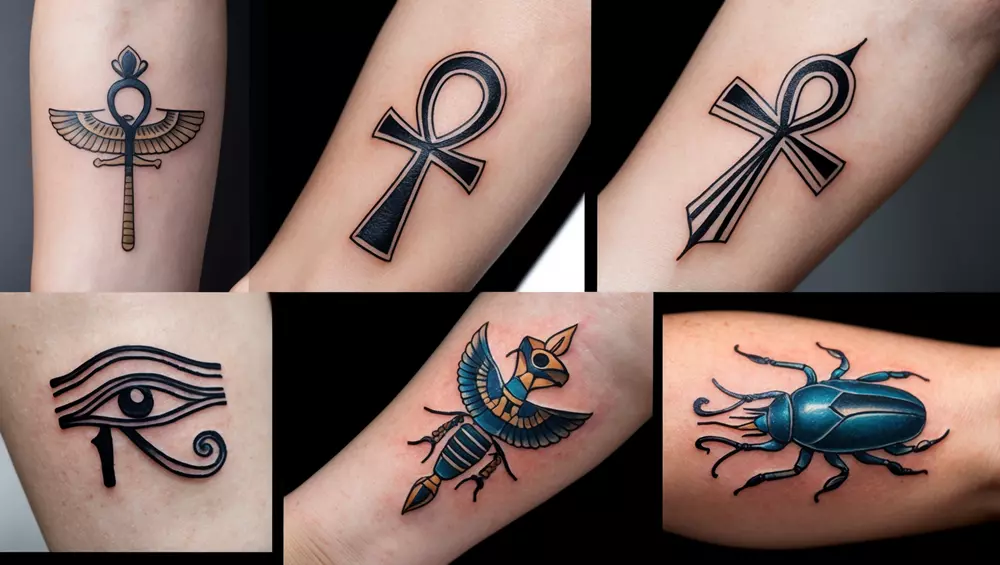
Black Panther’s Nod to Egyptian Mythology – The fictional land of Wakanda in Marvel’s Black Panther shares some visual and cultural parallels with Egyptian lore, combining African mythology with a futuristic spin. The film’s design pulls inspiration from Egypt’s landscapes and symbolism, showing a subtle yet strong influence.
Fashion and Art Deco’s Egyptian Revival – The 1920s Art Deco movement drew heavily on Egyptian motifs, especially after the discovery of Tutankhamun’s tomb. You’ll find Egyptian-inspired patterns and designs in architecture and fashion of that time.
Narcos: Mexico – Interestingly, Egyptian mythology has even inspired crime shows, where narco-culture references symbols like the Eye of Horus as protective charms, representing power and protection in a different context.
Nike Sneakers Inspired by Egyptian Symbols – Some sneaker designs have drawn inspiration from Egyptian symbols, especially for themed collections. These symbols add a layer of mystery and history to modern streetwear.
Kanye West’s Yeezus Tour – Kanye’s Yeezus tour featured Egyptian-inspired visuals, including a pyramid stage and symbols like the Eye of Horus. This fusion of hip-hop and ancient Egypt was a cultural moment, bringing Egypt’s ancient power and mystique to modern performance.
Sources
- Gods in Ancient Egypt – Oxford Research Encyclopedia of Religion
- Ancient Egyptian Mythology – World History Encyclopedia
- Egyptian Mythology: The Gods, Heroes, Culture, and Stories of Ancient Egypt – History Cooperative
- Ancient Egyptian Gods and Goddesses – British Museum
- The Egyptian Gods in Modern Culture: From Pop Culture to Academic Discourse – Egypt Mythology



